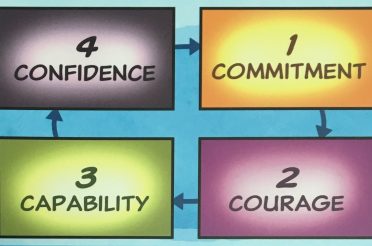 Every business is unique, but each needs to perform a common set of activities in order to remain strong and effective. Like eating, breathing, and sleeping, these activities make up the day-to-day and year-to-year cycles. But unlike those automatic body rhythms, the business activities must be intentionally performed or the company will find itself listing to one-side, or even entirely de-railed.
Every business is unique, but each needs to perform a common set of activities in order to remain strong and effective. Like eating, breathing, and sleeping, these activities make up the day-to-day and year-to-year cycles. But unlike those automatic body rhythms, the business activities must be intentionally performed or the company will find itself listing to one-side, or even entirely de-railed.
Let’s take a look at those four activity centers, and their two dimensions…
The Four Activity Centers
- Operations: The first activity center is the normal day-to-day serving of your customers, which we’ll call operations. So if you’re a cybersecurity firm, it’s the design and deployment of network defense systems. For web software companies, it’s the agile planning meetings and coding sprints. For consultants, it’s the customer meetings and solution development. Each of these has the primary activities, and the ancillary components like responding to e-mails, scheduling appointments, business travel, etc.
- Strategy/Innovation: Aside from the day-to-day, though, there’s also a need to have regular cycles of strategy and innovation. Strategy is the opportunity to step back, take stock of the big picture, and clarify the next steps. Without at least some level of strategy, your company will find itself going in circles, usually progressively lower and lower circles over time. Combined with strategy activities are innovation activities: this is where you explore, experiment, and develop new ideas — they create loss in the short-term, but are what power your future profits and create your future operation activities.
- Marketing/ Sales/ Business Development: Just because you build a better mouse trap, doesn’t mean people will flock to your doorstep. You can have awesome operations, and brilliant strategy/ innovation, but unless it’s coupled with an effort to communicate your message, connect to your market, and catalyze purchases, it will have been in vain. The right mix will differ for each business, but missing the ingredient altogether will cause the whole recipe to fall flat.
- Finance: Lastly, the numbers side of the house. Giving attention to your pricing strategy, the design of your cost structure, sources and uses of funds, proportion of debt/equity, etc. Not only should these be evaluated historically, almost more importantly they should be planned looking forward. Keeping your eye on this ball will keep you from waking up one day and finding all your hard work isn’t producing the results you had hoped, or worse, even threatening your company’s existence.
The Two Dimensions for each Activity Center
For each of the four activities centers, there are two dimensions:
- People: Operations, Strategy/Innovation, Marketing, and Finance don’t just happen by themselves — they’re done by people. As the entrepreneur, one of your key roles is assembling the team that powers each of these areas. They can be internal (employees), external (contractors, service providers), or yourself. One of the traps is to try to do them all yourself, but it’s finding ways to delegate and share activities that enables you and your business to grow. The other part of the People dimension is to recognize that your business starts with people, and ends with people — at the end of the day, it’s about the human ecology.
- Process: The steps followed, the templates used, the technology implemented, regular business habits and routines — all of these form the Process dimension of each activity center. Designing, documenting, communicating, updating — as we like to say, ‘process is the architecture for getting things done’. Similar to people, process is what’s going to enable you to grow or improve — if the process is “you” keeping everything on track, then “you” will become your business’ biggest constraint.
Synchronizing the Four Activity Centers & Two Dimensions
Go ahead and pull out a piece of paper: Across the top, write the four activity centers (Operations, Strategy/Innovation, Marketing, Finance). Along the side, write the two dimensions (People, Process). Now rate each intersection for your business on a scale of 1 to 5. Taking a look at the results:
- Step 1 is to make sure each of the intersections are addressed. Is there an intersection that needs attention? What next steps should you take to address that area?
- Step 2 is to make sure they’re all working in harmony. Do your Operation Processes deliver on the message of your Marketing? How well does your Finance Process enable you to evaluate your Strategy/Innovation? Do your People understand the promise of your Marketing and the direction of your Strategy? Etc.
Applying the combination of the Four Activity Centers and the Two Dimensions will keep you focused and your business strong. And as you grow, it’s a great way to take the pulse across your business and make sure all the pieces are working together to bring your business’ value proposition most effectively to market.
To hire the Elements Design Team help you design your business and finances, just reach out to setup your personal Coffee Conversation and explore opportunity.






